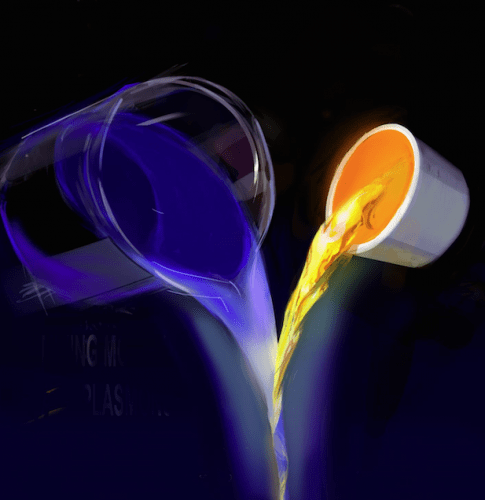
Described in the journal Nature, the work involved creating cavities just one nanometre wide in order to trap light. The researchers used the tiny gap between a gold nanoparticle and a mirror, and placed a coloured dye molecule inside. With such a minute mirrored space, the energy between the photon and the dye molecule oscillates back and forth so rapidly that it results in a complete mixing of the two.
"It's like a hall of mirrors for a molecule, only spaced a hundred thousand times thinner than a human hair," said lead researcher Prof Jeremy Baumberg from the NanoPhotonics Centre at Cambridge's Cavendish Laboratory.
To achieve the mixing, the dye molecules need to be aligned correctly in the nanometre cavity. But the molecules have a tendency to lie flat on the gold, rather than upright as required. Working with a team of chemists at Cambridge led by Prof Oren Scherman, Baumberg and his colleagues were able to encapsulate the dyes in hollow barrel-shaped molecular cages called cucurbiturils, which held the dye molecules upright.
When the dye is introduced to the cavities with the trapped light, the resulting molecule scattering spectrum splits into two separated quantum states, which indicates the 'mixing'. This spacing in colour corresponds to photons taking less than a trillionth of a second to return to the molecule, meaning detecting the signature was a difficult task.
"Finding single-molecule signatures took months of data collection," said Rohit Chikkaraddy, the paper’s lead author.
Previous attempts to achieve this type of mixing have only been successful at extremely low temperatures, but the Cambridge team’s work was carried out at room temperature. Along with potential applications for quantum computing, the research could help further the understanding of photosynthesis, or even manipulate the chemical bonds between atoms.




Nanogenerator consumes CO2 to generate electricity
Nice to see my my views being backed up by no less a figure than Sabine Hossenfelder https://youtu.be/QoJzs4fA4fo